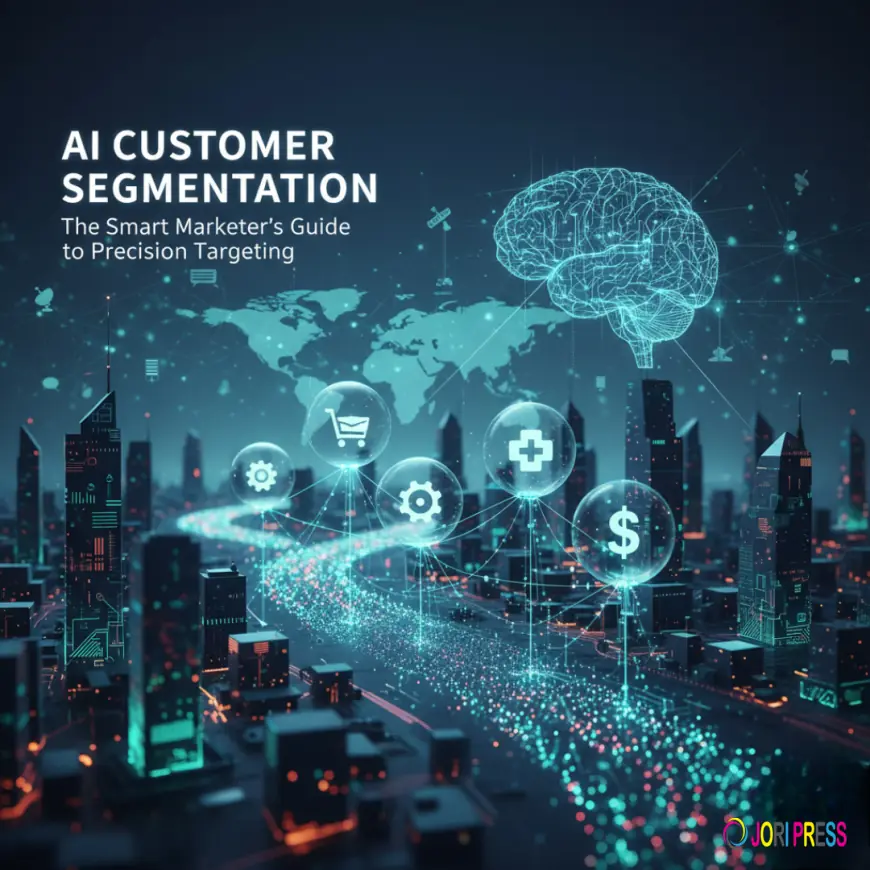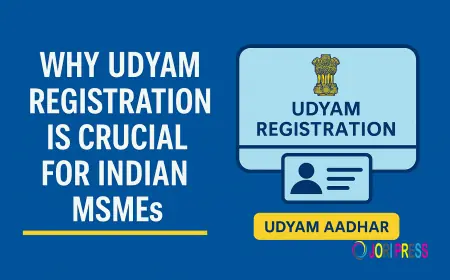Precision Targeting Made Easy with AI Segmentation Tools
Discover how AI customer segmentation empowers smart marketers to deliver precision targeting, boost ROI, and create data-driven retail strategies that convert.

The days of casting wide marketing nets and hoping for the best are over. Modern consumers expect personalised experiences that speak directly to their needs, preferences, and behaviours. Yet most businesses still rely on outdated demographic guesswork, wondering why their carefully crafted campaigns fall flat.
AI customer segmentation represents a paradigm shift from assumption-based marketing to intelligence-driven precision. Rather than grouping customers by age brackets or postcodes, artificial intelligence analyses actual behavioural patterns to create meaningful segments that predict future actions. This transformation isn't just about better targeting; it's about fundamentally understanding who your customers really are.
The numbers speak for themselves: businesses that have used AI-driven segmentation have seen a 1.5-fold boost in engagement rates compared to traditional approaches, a yearly savings of $1 billion for Netflix, and an increase in revenue of £77.5 million for ASOS.
The Foundation: Understanding AI and Customer Segmentation
Traditional customer segmentation divides audiences into broad categories based on surface-level characteristics. A typical approach might segment "working mothers aged 25-40 in urban areas" and assume they all share similar purchasing behaviours. This method ignores the complexity of modern consumer journeys and individual preferences.
How to use AI to improve customer segmentation?
AI for customer segmentation begins with comprehensive data integration from multiple touchpoints. The process involves collecting customer interactions from websites, email campaigns, social media platforms, and purchase histories. Machine learning algorithms then analyse these vast datasets to identify genuine behavioural patterns that traditional demographic analysis cannot detect.
How does AI improve customer targeting?
AI revolutionises customer targeting through precision that was previously impossible to achieve. Instead of broad demographic categories, AI customer segmentation analyses hundreds of data points to create highly specific customer profiles. These include browsing patterns, email engagement timing preferences, social media interaction styles, and purchase decision timelines.
The technology enables what marketers call "segment of one" marketing, where each customer receives completely personalised experiences based on their unique behavioural profile. AI systems can determine that Customer A responds best to social proof and testimonials, while Customer B prefers technical specifications and feature comparisons. This granular understanding dramatically improves conversion rate optimisation and customer satisfaction.
In what ways does AI enhance personalisation in marketing?
AI audience segmentation allows hyper-personalisation by analysing client journeys at unprecedented levels. The system measures how customers consume material, which communication channels interest them, and what drives purchases. Marketers may create relevant, not generic, experiences using this insight.
Advanced AI systems can forecast if a customer responds better to morning emails or afternoon social media posts. Dynamic customisation engines that react to user behaviour can also recognise which product categories interest specific client segments and change website layouts.
AI Customer Segmentation Tools: Powering Modern Marketing
SaleCycle: Leading AI-Powered Customer Intelligence
SaleCycle stands at the forefront of AI and behavioural segmentation through its comprehensive approach to visitor identification and behavioural analysis. The platform's sophisticated identity resolution technology connects anonymous website visitors to recognisable customer profiles, enabling marketers to understand customer journeys across multiple devices and sessions.
SaleCycle’s AI algorithms analyse user behaviour tracking on website to create detailed customer segments based on actual engagement patterns. This capability extends beyond simple page views to understand browsing intent, purchase probability, and optimal engagement timing. SaleCycle's integration with major CRM systems ensures that segmentation insights translate directly into actionable marketing campaigns.
Enterprise Solutions for AI Marketing
Modern AI customer segmentation tools integrate seamlessly with existing marketing technology stacks. Platforms like HubSpot leverage machine learning to automatically update customer segments based on changing behaviours, while Google Analytics uses AI to identify high-value customer patterns that might otherwise go unnoticed.
Which AI tools are best for eCommerce personalisation?
E-commerce requires specialised AI tools for customer segmentation that can grasp online shopping behaviours. Top platforms integrate various AI technologies: using natural language processing to analyse customer reviews, computer vision to grasp product preferences, and predictive analytics to anticipate future purchases.
Effective eCommerce AI segmentation tools enhance conversion rates by pinpointing which customer groups react best to various messaging strategies, pricing methods, and promotional offers. They examine how customers navigate websites, pinpoint areas of difficulty, and recommend tailored experiences that enhance the transition from browsing to buying.
Practical Applications: From Theory to Results
How can generative AI be used in business and marketing?
Generative AI transforms customer segmentation by creating personalised content at scale. These systems can generate unique email subject lines for different customer segments, create personalised product descriptions based on individual preferences, and even develop customised marketing copy that resonates with specific behavioural patterns.
The technology excels at abandoned cart recovery by generating personalised messages that address the specific reasons why individual customers didn't complete their purchases. Rather than sending generic "You forgot something" emails, generative AI creates targeted content that speaks to each customer's demonstrated preferences and concerns.
Real-World Implementation
Modern AI segmentation drives tangible business improvements across various touchpoints. For email marketing, AI identifies optimal send times for each customer segment and personalises content based on demonstrated interests. Abandoned basket emails become highly targeted communications that address specific customer behaviours rather than one-size-fits-all reminders.
User behaviour tracking on website interactions feeds directly into AI segmentation systems, creating feedback loops that continuously refine customer understanding. As customers interact with personalised experiences, the AI learns from their responses and adjusts future segmentation accordingly.
Overcoming Implementation Challenges
How are marketing agencies using AI tools?
Progressive marketing agencies leverage AI customer segmentation to deliver superior client results. They use AI tools to identify previously hidden customer segments, create more effective targeting strategies, and demonstrate clear ROI improvements through detailed attribution analysis.
Agencies particularly benefit from AI's ability to manage multiple client accounts simultaneously, applying segmentation insights across different industries while maintaining client-specific customisation. The technology enables smaller agencies to compete with larger competitors by providing enterprise-level customer intelligence capabilities through platforms that offer both AI and customer segmentation solutions.
Starting Your AI Segmentation Journey
Implementation begins with data audit and integration. Successful businesses start by connecting their various customer touchpoints: website analytics, email platforms, CRM systems, and social media accounts. This unified data foundation enables AI algorithms to build comprehensive customer profiles.
The key is starting with focused use cases rather than attempting comprehensive transformation immediately. Many businesses begin with email segmentation, using AI to identify optimal send times and content preferences before expanding to website personalisation and advertising optimisation.
Measuring Success and Future Opportunities
How Is Generative AI Beneficial for Businesses?
The business benefits of AI customer segmentation extend beyond improved marketing metrics. Companies are seeing improved customer satisfaction scores because personalised experiences resonate more and feel valuable. Businesses can enhance customer retention by proactively addressing needs and preferences before customers look for alternatives.
AI segmentation enhances resource allocation by pinpointing customer segments with the greatest potential for lifetime value. This intelligence helps businesses target their acquisition efforts on prospects who are most likely to become valuable long-term customers.
Looking Ahead: The Evolution of AI Customer Segmentation
The future of AI customer segmentation points toward even more sophisticated applications. Predictive AI will anticipate customer needs weeks or months in advance, enabling proactive rather than reactive marketing strategies. Cross-channel orchestration will create seamless experiences as customers move between online and offline touchpoints.
How will generative AI transform our approach to marketing?
Generative AI represents the next frontier in customer segmentation, enabling real-time personalisation that adapts continuously to changing customer behaviours. Rather than static segments updated periodically, future systems will adjust customer classifications and personalisation strategies instantaneously based on new interactions.
The technology will also enable more sophisticated identity resolution across an expanding array of customer touchpoints, from IoT devices to voice assistants, creating comprehensive customer understanding that spans the entire digital ecosystem.
Conclusion
How can AI enhance my e-marketing strategies?
AI customer segmentation elevates marketing from mere guesswork to targeted, behaviour-driven strategies. This technology empowers businesses to see customers as unique individuals, fostering personalised experiences that enhance engagement, satisfaction, and revenue growth.
Success demands that we transcend conventional methods and fully adopt data-driven customer intelligence. As AI capabilities advance, businesses that embrace sophisticated segmentation strategies today will create competitive advantages that will be hard for others to replicate.
The question is not if AI will transform customer segmentation, but how swiftly innovative businesses will adopt these capabilities to enhance customer relationships and foster sustainable growth.
What's Your Reaction?
 Like
0
Like
0
 Dislike
0
Dislike
0
 Love
0
Love
0
 Funny
0
Funny
0
 Angry
0
Angry
0
 Sad
0
Sad
0
 Wow
0
Wow
0















































